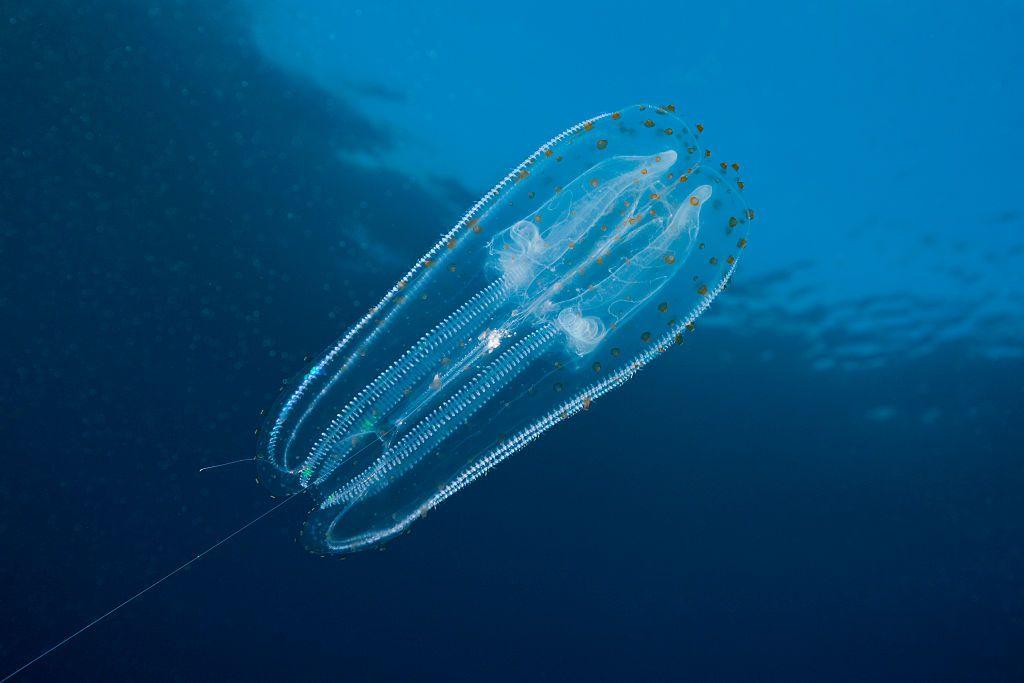Injured jellyfish 'fuse together' when they're having a wobble

These jellyfish usually live alone, so they wouldn't normally fuse together in the wild
- Published
If you're in the sea and you spot a jellyfish, we're often told not to get too close as some of them can sting, but now scientists think some of their scientific processes could actually help to heal wounds.
Scientists have found that injured comb jellyfish, or ctenophores, are able to fuse their bodies together and behave as one.
They merge their nervous systems, which coordinate how their bodies move, and their stomachs. This is a process that has never been seen before in another species.
This amazing trick was discovered when they saw an odd looking jellyfish in a tank that had two mouths - and two bottoms! Are you squidding me?
More 'unbe-reef-able' jellyfish stories
- Published28 September 2023
- Published4 August 2023
- Published14 December 2021
What is a comb jellyfish?
These jellyfish are bright in a lot of ways!
Comb jellyfish are known as "sea walnuts" due to their shape, and are found in most marine environments.
They first appeared on Earth around 700 million years ago - that's a long time before dinosaurs arrived.
They are stingless, so are harmless to humans, and bioluminescent, which means they can light up.
They use a glue-like substance on their tentacles to capture prey.
Amazingly, this species can regenerate their bodies and regrow any missing parts.
They can even reverse the signs of ageing and go back to being larvae when living in dangerous conditions.
Why do comb jellyfish fuse together?
The study, published in the journal Current Biology, showed that when injured the jellyfish could fully join together in a matter of hours to help them survive.
When they were tested with a small poke - both the fused jellyfish appeared to respond, showing they were connected.
Also, when one of the jellyfish digested a piece of colourful fluorescent food, it also passed over to the other. Sharing is caring after all!
It's hoped this study into how the jellyfish can regenerate and heal themselves could help with things like human organ transplants in the future.
More mysterious sea stories
- Published26 February
- Published2 September
- Published8 September 2023
